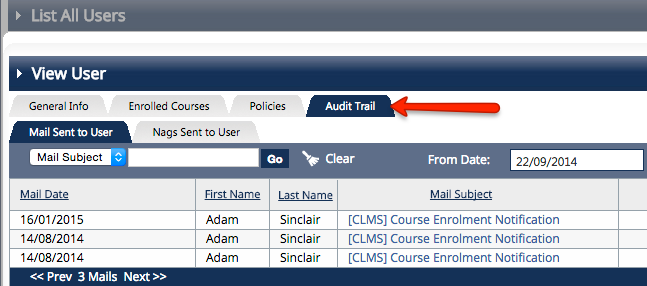New LMS feature: preview Nagware due to be sent the following day

Nagware is one of our most popular and powerful features. It automates the tedious task of tracking down people who neglect to complete their training. Our analysis shows that proper implementation of Nagware can increase the completion rate by 300%. With Nagware’s power comes great responsibility. Nags can be sent to any person at the […]
New LMS feature: email audit trail for individual users

The audit trail keeps track of every email and Nag sent by the LMS. It is enables administrators to keep track of actions by other administrators; evidence course completions to regulators; and access an historical record when needed. Previously the audit trail for the entire firm was stored in one long list. However, many times […]
How can you offset wage rises by increasing productivity with eLearning?
As well as impacting millions of workers at the lower end of the payscale, pay increases are likely to cascade upwards with senior members of staff expecting proportionately higher pay. These increases could see wage bills rising by upwards of 50%, adding pressure on businesses to boost productivity levels and minimise costs – in other […]
Health and Safety law exemptions for self-employed workers
From 1st October 2015, certain categories of self-employed workers will no longer be required to comply with health and safety law such as the Health and Safety at Work etc Act 1974. The law is in place to protect people from exposure to risks caused by the activities of businesses and self-employed individuals, and will […]
How prepared are you for EU Data Protection reforms?

In a recent blog post, David Smith, Deputy Commissioner and Director of Data Protection at the Information Commissioner’s Office wrote about how businesses can prepare ahead of the upcoming EU Data Protection Regulation reforms which are likely to be finalised before the end of this year. Once finalised, there will be a two-year transition period before […]
Six techniques for making compliance more than just a box ticking exercise
The consequences of failing to comply with regulations are well documented, yet we still see a wide variance in risk tolerance in businesses across the UK, from those who ignore the issue to those striving to create a compliant workplace culture. Putting policies in place is a necessary step towards achieving compliance, but ensuring that […]






